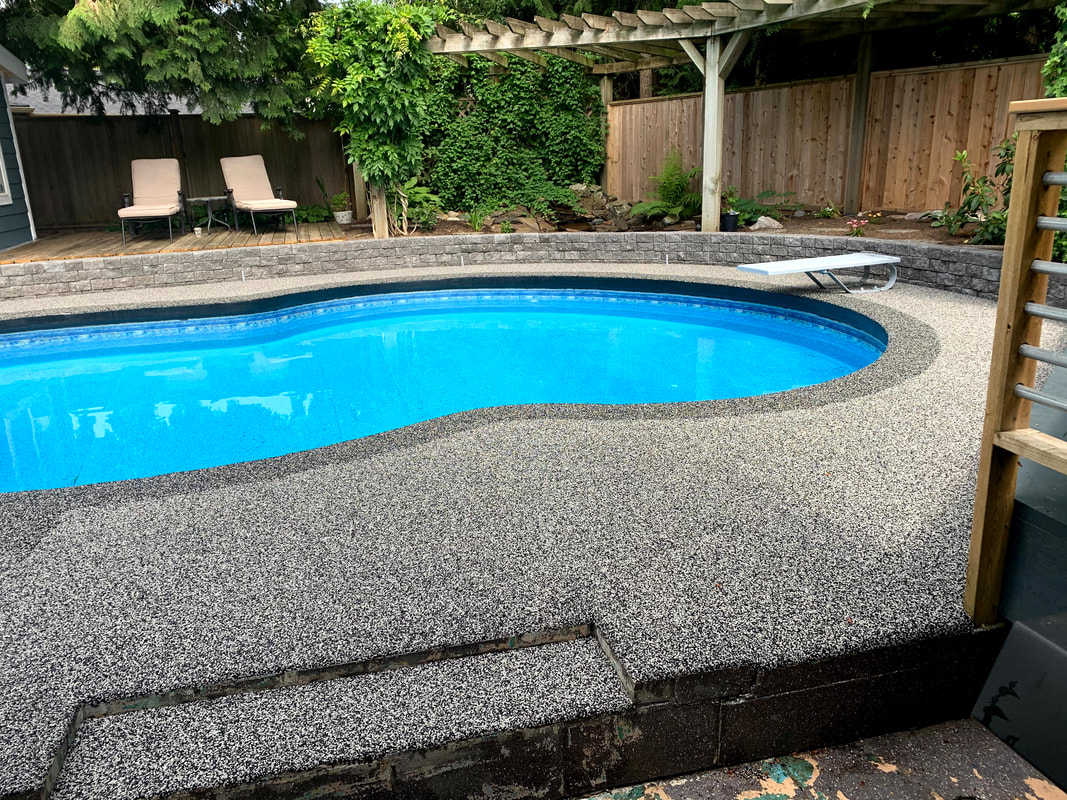If you are planning to resurface your pool deck in Tallahassee, proper preparation is crucial to achieve a beautiful and long-lasting result. A well-prepared surface ensures that the new coating or finish adheres properly and enhances the overall aesthetics of your pool area. In this article, we will guide you through the essential steps involved in preparing your pool deck for resurfacing, along with valuable tips to ensure the best possible outcome.
Assess the Condition of Your Pool Deck
Before you embark on the resurfacing process, take some time to evaluate the current condition of your pool deck. Look for cracks, chips, or any other damage that may need to be addressed before resurfacing. It’s important to fix these issues beforehand to prevent them from reappearing after the resurfacing is complete.
Clear the Pool Deck
To prepare your pool deck for resurfacing, you need to remove any furniture, plants, or other objects from the deck area. Clearing the deck will provide unobstructed access and prevent any potential damage to your belongings during the resurfacing process.
Thoroughly Clean the Surface
Proper cleaning is essential to ensure the new surface adheres well to the pool deck. Start by sweeping away any loose debris, such as leaves, dirt, or twigs. Next, use a pressure washer to thoroughly clean the deck surface, removing all traces of dirt, grime, and old coatings. Pay close attention to the edges, corners, and hard-to-reach areas. Allow the deck to dry completely before moving on to the next step.
Repair Cracks and Damage
Addressing cracks and damage is crucial to achieving a smooth and uniform pool deck surface. Fill in any cracks or pits with an appropriate concrete or epoxy patching compound, following the manufacturer’s instructions. Smooth the repaired areas with a trowel, ensuring they are level with the rest of the deck. Allow the patched areas to cure completely before proceeding.
Consider Resurfacing Options
When preparing your pool deck for resurfacing, it’s essential to consider the various options available. Popular choices for pool deck resurfacing include concrete overlays, pavers, tile, and stamped concrete. Each option has its unique benefits, so explore the pros and cons of each and select the one that best suits your needs, budget, and aesthetic preferences.
Prime the Surface
Priming the pool deck is an important step that promotes adhesion between the existing surface and the new coating or finish. Apply a concrete bonding agent or primer according to the manufacturer’s instructions. Make sure to cover the entire surface evenly using a brush or roller. Allow the primer to dry completely before moving forward.
Apply the Resurfacing Material
Once the surface is prepped and primed, it’s time to apply the resurfacing material. Follow the manufacturer’s instructions carefully whether you are working with a concrete overlay, tile, or another type of resurfacing material. Use the appropriate tools, such as a trowel or a notched trowel, to apply the material evenly, ensuring a smooth and consistent finish.
Customize the Look
Resurfacing your pool deck also offers an opportunity to customize its appearance. Consider adding decorative elements, such as stamped patterns, borders, or color accents, to create a unique and visually appealing pool area. Work with your contractor or supplier to explore the various customization options available and select the ones that enhance your pool deck’s aesthetics.
Allow for Proper Curing
Once the resurfacing material is applied, allowing it to cure properly before using the pool area is crucial. Follow the manufacturer’s instructions regarding the curing time, and avoid any activities or heavy objects that may damage the freshly resurfaced deck. Proper curing ensures the longevity and durability of the new surface.
Regular Maintenance
To keep your pool deck in pristine condition, regular maintenance is key. Establish a routine maintenance plan that includes cleaning, sealing, and periodic inspections. Remove any stains promptly and avoid using harsh chemicals or abrasive cleaners that could damage the resurfacing material. By maintaining your pool deck regularly, you can extend its lifespan and keep it looking great for years to come.
Preparing your pool deck for resurfacing in Tallahassee requires careful attention to detail and following the necessary steps to ensure a successful outcome. You can achieve a beautiful and long-lasting result by assessing the deck’s condition, thoroughly cleaning the surface, addressing cracks and damage, selecting the right resurfacing material, and following proper application techniques. Remember to customize the look to your liking and establish a regular maintenance routine to preserve the deck’s aesthetics and durability. With these guidelines in mind, you can transform your pool deck into a stunning outdoor oasis for relaxation and enjoyment.
Key Takeaways:
- Proper preparation is essential when resurfacing your pool deck in Tallahassee to ensure a long-lasting and visually appealing result.
- Assess the condition of your pool deck and address any cracks or damage before starting the resurfacing process.
- Clear the pool deck of furniture and other objects to provide unobstructed access during resurfacing.
- Thoroughly clean the surface using a pressure washer to remove dirt, grime, and old coatings.
- Repair cracks and pits with a suitable patching compound and ensure they are level with the rest of the deck.
- Based on your preferences and budget, consider different resurfacing options, such as concrete overlays, pavers, tile, or stamped concrete.
- Prime the surface with a concrete bonding agent or primer to enhance adhesion between the existing surface and the new coating or finish.
- Follow the manufacturer’s instructions when applying the resurfacing material, using the appropriate tools for an even and smooth finish.
- Customize the look of your pool deck by adding decorative elements like stamped patterns, borders, or color accents.
- Allow for proper curing time before using the pool area to ensure the durability and longevity of the resurfaced deck.
- Implement a regular maintenance routine, including cleaning, sealing, and periodic inspections, to keep your pool deck in optimal condition.






